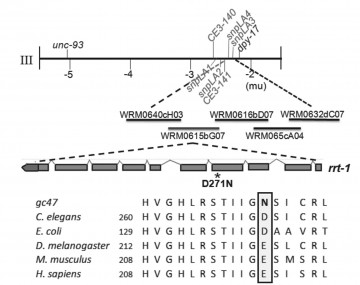Van Gilst Laboratory
Research Description
The primary goal of our laboratory is to identify mechanisms that prevent and/or reverse the aging process. We are especially interested in mitochondrial dynamics during aging and aging reversal. The majority of our investigations involve the soil roundworm C. elegans, which has proven to be a powerful model for studying longevity. We have found that adult worms, when starved, are able to protect their longevity and reproductive potential for very long periods of time (several normal lifetimes). What happens during this period of starvation is highly unusual and because of this, the mechanisms driving this process are of significant interest. Specifically, when starved worms are re-fed, they are able to regenerate their reproductive system and reverse the symptoms of aging in somatic tissues. We believe that understanding these novel mechanisms of tissue regeneration and rejuvenation will yield novel insights into the aging process and stimulate the development of interventions that reverse the aging process in other species, including mammals. Our laboratory is also interested in the understanding the impact of temperature on longevity and tissue preservation. We have found that nuclear receptor coordination of membrane composition enables animals to live very long periods of time at very low temperatures (4-6° C), which we liken to tissue preservation. Based on our findings, we are currently focused on developing interventions that can significantly extend lifespan and tissue preservation at very low temperatures. Finally, another focus of our laboratory is understanding how hypoxia impacts reproduction and longevity. These studies are carried out in close collaboration with the Crowder Laboratory here at UW. We have found that deletion of the germline brings about a number of significant metabolic changes that make animals highly resistant to hypoxic injury. We are currently focused on characterizing these metabolic changes and determining how they influence or determine hypoxic injury.
CONTACT INFORMATION
Mitochondria and Metabolism Center (MMC)
Van Gilst Laboratory
University of Washington, Box 358057
850 Republican Street, Room N130 (SLU)
Seattle, Washington 98109-8057
Phone: 206-221-5145
Email: vangilst@uw.edu


